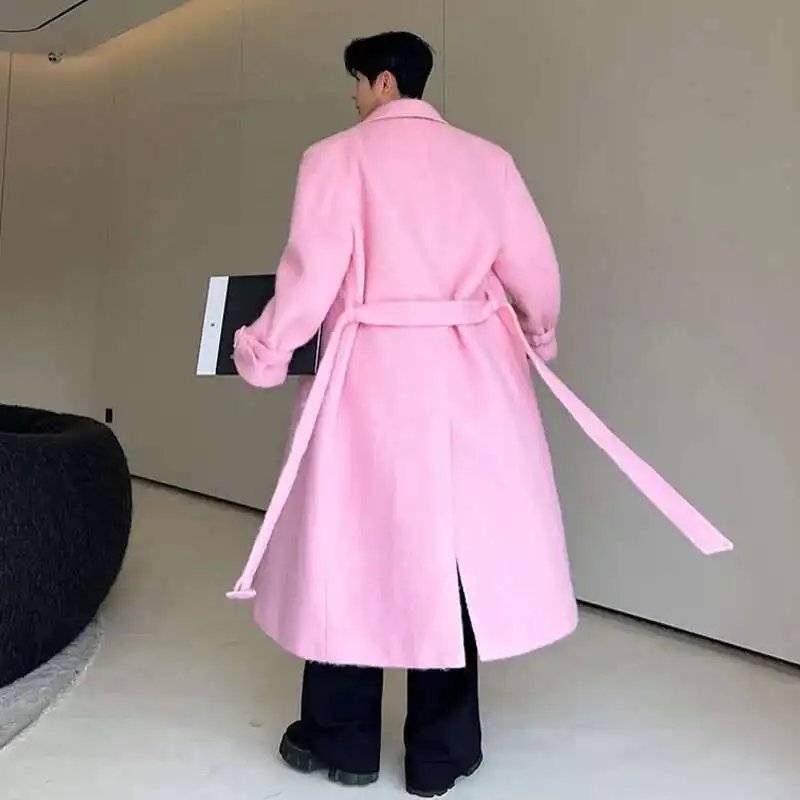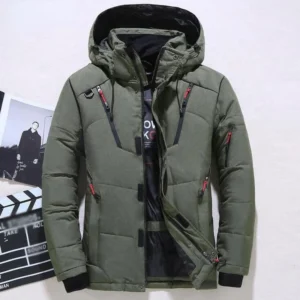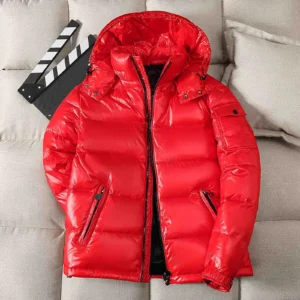Introduction: Why a Quality Long Overcoat Is Essential for Cold Weather
When winter winds howl and temperatures plummet, a quality long overcoat becomes more than just a fashion statement—it’s your primary defense against the elements. A true long overcoat typically extends below the knee, providing substantial coverage that shields your body from frigid air and biting winds.
The beauty of a well-crafted overcoat lies in its dual nature: it delivers exceptional warmth while simultaneously elevating your entire appearance. Unlike purely technical winter gear, a refined overcoat transitions seamlessly between professional meetings, evening events, and weekend outings without missing a beat.
In this comprehensive guide, we’ll explore everything you need to know about selecting the perfect men’s long overcoat for cold weather. From premium materials and construction techniques to styling options and maintenance tips, we’ll equip you with the knowledge to make an informed investment in your winter wardrobe.
A quality overcoat performs optimally in temperatures ranging from 20°F to 40°F (-6°C to 4°C), though with proper layering, many can withstand even colder conditions. Understanding the fundamentals of choosing the right coat length can dramatically improve both comfort and style during the coldest months of the year.
What Makes a Superior Cold Weather Long Overcoat?
Not all overcoats are created equal when it comes to battling winter’s chill. Several crucial factors determine whether a coat will keep you comfortably warm or leave you shivering at the bus stop.
Material Composition
The foundation of any quality overcoat is its material. Dense, tightly-woven fabrics with substantial weight (ideally 20+ ounces per yard) create an effective barrier against cold air. Natural fibers like wool provide excellent insulation by trapping warm air close to the body, while still allowing moisture to escape.
Construction Quality
Superior cold-weather overcoats feature multiple layers of construction, including outer fabric, interfacing, lining, and sometimes interlining. Full canvas construction, though more expensive, creates a better-fitting coat that molds to your body over time, eliminating cold-air gaps that can develop with fused alternatives.
Thoughtful Design Features
Details matter tremendously in cold weather. A well-designed collar that can be turned up against the wind, storm flaps that prevent drafts through button closures, and deep, functional pockets all contribute to real-world warmth. The perfect winter coat length should provide coverage to at least mid-thigh, protecting vital areas while allowing comfortable movement.
Proper Fit
An overcoat should allow room for layering without excess bulk. Shoulders should align with your own, sleeves should cover suit jackets while leaving a half-inch of shirt cuff visible, and the body should allow closure without strain. This balance ensures both warmth and a flattering silhouette.
For true cold-weather performance, many discerning men turn to wool overcoats as their foundation garment, appreciating how this natural material has protected humans from harsh elements for centuries while maintaining its distinguished appearance.
Top Materials for Maximum Warmth and Durability
The material of your overcoat largely determines its performance in harsh conditions. Here’s a breakdown of the most effective options for staying warm while maintaining style:
Premium Wool Options
Pure Wool (20-24 oz): The gold standard for winter overcoats, offering excellent insulation even when damp. Heavier weights (24+ oz) provide exceptional warmth for the coldest climates.
Merino Wool: Finer fibers create a softer, less scratchy feel while maintaining impressive warmth-to-weight ratio. Perfect for those who find traditional wool irritating.
Melton Wool: Tightly woven and often brushed for a smooth finish, this dense fabric excels in blocking wind. Its substantial weight makes it ideal for the harshest conditions.
Luxury Fiber Blends
Cashmere: Offering approximately 8 times the insulation value of wool at a fraction of the weight, cashmere overcoats represent the pinnacle of luxurious warmth. Pure cashmere models command premium prices, while wool-cashmere blends (typically 10-30% cashmere) provide enhanced softness and insulation at more accessible price points.
Alpaca Blends: With hollow fibers that trap additional warm air, alpaca provides exceptional insulation. Often blended with wool for improved durability and structure.
Technical and Innovative Materials
Wool-Synthetic Blends: Strategic additions of nylon or polyester can improve durability and weather resistance while maintaining wool’s thermal properties.
Technical Wool: Modern treatments can add water and wind resistance to traditional wool without compromising breathability or appearance.
Performance Linings: Thinsulate™ and other advanced insulation materials can be incorporated into classically styled coats to enhance thermal efficiency.
For those facing truly frigid conditions, understanding the ultimate guide to men’s wool coats for cold climates can help identify the specific material weights and constructions that offer protection in temperatures well below freezing. The most effective cold-weather overcoats often combine multiple materials to balance warmth, weight, and weather resistance.
6 Best Men’s Long Overcoats for Cold Weather
After extensive research and evaluation, we’ve identified six standout overcoats that excel in cold weather conditions. Our selection process incorporated multiple factors including material quality, construction techniques, insulation effectiveness, style versatility, and overall value. Each coat was assessed for its thermal performance in varying conditions, from moderately cold urban environments to truly frigid winter landscapes.
These selections represent different priorities—from maximum warmth to refined style—ensuring options for various needs and preferences. Understanding fundamental aspects like men’s coat length options helped inform our evaluations of each model’s practical performance.
Best Overall: Premium Wool-Cashmere Blend Overcoat
This exceptional coat strikes the perfect balance between luxurious comfort and practical cold-weather performance. Crafted from a premium blend of 90% wool and 10% cashmere (22 oz weight), it delivers substantial warmth without excessive bulk.
Key Features:
– Three-quarter length design covering the knees for comprehensive protection
– Half-canvassed construction for superior drape and durability
– Notch lapels that can be turned up against wind
– Inner chest pocket and two deep exterior pockets with micro-fleece lining
Pros:
– Versatile enough for both business and casual settings
– Provides reliable warmth down to approximately 20°F (-6°C) with appropriate layering
– Exceptional construction quality promising 5+ years of regular use
– Natural fibers allow moisture management even during active commuting
Cons:
– Requires professional cleaning
– Premium pricing reflects quality materials and construction
This coat exemplifies what discerning customers seek in cold-weather outerwear: sophisticated appearance paired with genuine functional performance.
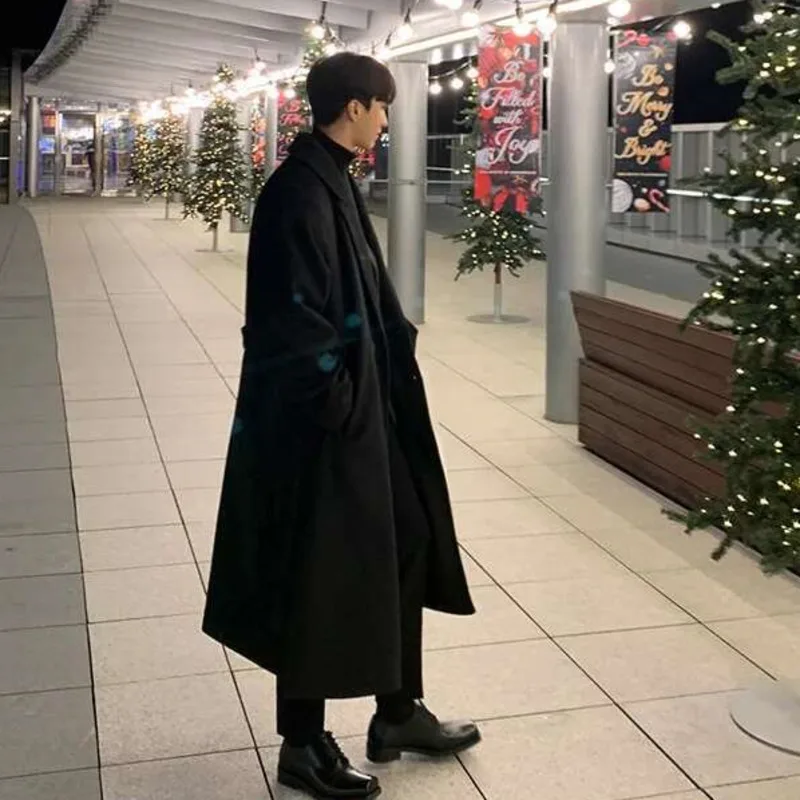
Warmest Option: Technical Wool Blend with Advanced Insulation
For those facing truly punishing winter conditions, this innovative overcoat combines traditional styling with modern technology. Its shell consists of a heavy 24 oz wool blend reinforced with weather-resistant fibers, while the interior features a technical insulation system typically found in performance outerwear.
Key Features:
– Strategic quilted lining with 120g synthetic insulation
– Windproof membrane between outer fabric and lining
– Extended collar with concealed throat latch
– Water-resistant treatment on wool exterior
Pros:
– Exceptional performance in extreme conditions (effective to -10°F/-23°C)
– Maintains classic overcoat appearance despite technical construction
– Superior wind resistance compared to traditional overcoats
– Can replace specialized technical outerwear in most urban settings
Cons:
– Slightly heavier than conventional wool coats
– Less breathable than pure natural fibers
For residents of particularly cold regions, heavy winter coats like this represent the intersection of traditional tailoring and modern performance technology.
Best Value: Classic Double-Breasted Long Overcoat
This coat delivers impressive cold-weather performance without the premium price tag of luxury options. Constructed from a 20 oz wool-blend fabric, it offers substantial protection against winter elements while maintaining a refined appearance.
Key Features:
– Traditional 6×2 button double-breasted configuration for extra chest coverage
– Three-quarter length design for comprehensive protection
– Two exterior flap pockets and one interior pocket
– Durable satin lining for easy on/off
Pros:
– Exceptional warmth-to-price ratio
– Classic styling that won’t look dated
– Double-breasted design provides extra layer of insulation across chest
– Accessible price point without compromising essential quality
Cons:
– Wool blend contains synthetic fibers (70% wool, 30% polyester)
– Less refined finishing details than premium alternatives
This double-breasted overcoat demonstrates that effective cold-weather protection doesn’t necessarily require a luxury budget, making quality outerwear accessible to more consumers.
Most Stylish: Designer Single-Breasted Overcoat
For those unwilling to compromise on aesthetics even in frigid conditions, this designer offering delivers standout style while maintaining serious cold-weather functionality.
Key Features:
– Clean, minimalist design with concealed placket
– Premium 100% wool construction (21 oz) with cashmere-soft finish
– Subtle peak lapels and perfectly proportioned collar
– Meticulously tailored silhouette with subtle waist suppression
Pros:
– Distinctive yet timeless design that elevates any outfit
– Superior craftsmanship evident in every detail
– Effective in temperatures down to 25°F (-4°C) with appropriate layering
– Exceptional drape and movement
Cons:
– Fashion-forward cut may not accommodate heavy layering
– Investment-level pricing
This coat proves that serious cold-weather protection can come in a fashion-forward package that enhances rather than merely covers your carefully chosen attire.
Most Versatile: All-Weather Long Overcoat
This ingenious coat solves the challenge of unpredictable winter weather with a design that adapts to changing conditions. Its three-layer construction provides reliable warmth while managing moisture effectively.
Key Features:
– Water-resistant wool-blend outer shell (80% wool, 20% technical fibers)
– Removable quilted vest liner for temperature regulation
– Adjustable back belt for customizable fit
– Modern three-quarter length with side vents for movement
Pros:
– Adaptable to temperatures from 15°F to 45°F (-9°C to 7°C) by adjusting components
– Transitions seamlessly between business and casual settings
– Practical for travel across different climate zones
– Effective in both dry cold and wet conditions
Cons:
– Slightly more complex care requirements
– Moderate weight when all components are used
Understanding effective winter layering with long overcoats is essential to maximizing the versatility of adaptable designs like this one.
Best for Extreme Cold: Technical Performance Overcoat
When facing truly brutal winter conditions, this technical performance overcoat delivers exceptional protection while maintaining a more refined appearance than typical outdoor gear.
Key Features:
– Dense 26 oz wool-blend exterior with water-repellent treatment
– Advanced synthetic insulation rated for extreme temperatures
– Wind-blocking membrane technology
– Critical seam sealing and reinforced closure system
Pros:
– Extraordinary warmth suitable for the coldest urban environments (effective to -20°F/-29°C)
– Technical features hidden within classic overcoat styling
– Superior protection from wind, snow, and freezing rain
– Designed for active winter commuting with enhanced mobility features
Cons:
– Heavier than standard overcoats
– Premium pricing reflects advanced materials and construction
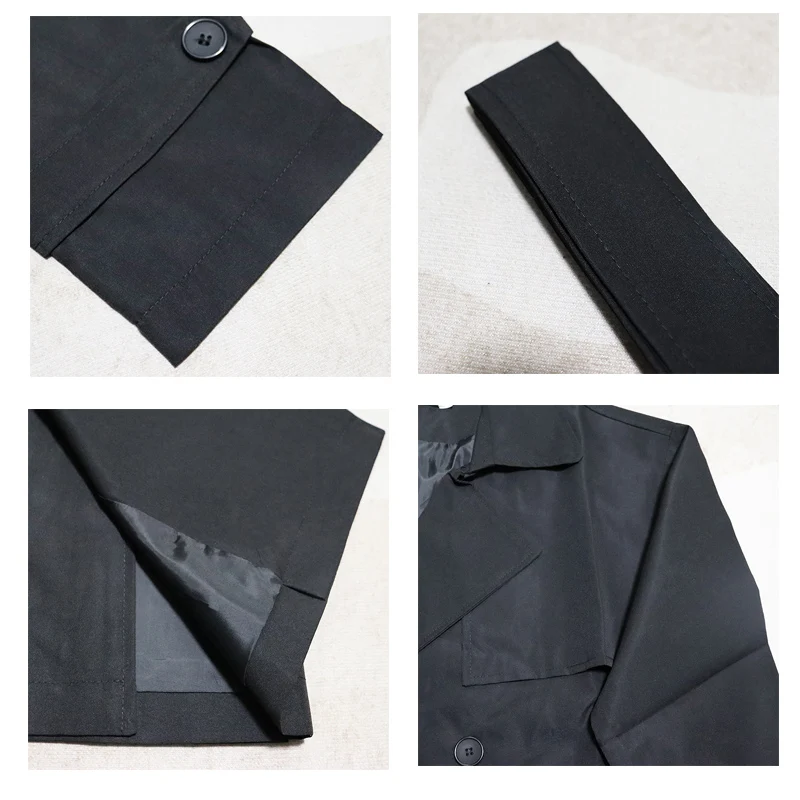
Comprehensive Comparison: Features at a Glance
| Overcoat Type | Price Range | Primary Materials | Warmth Rating | Weather Resistance | Best For | Weight |
|---|---|---|---|---|---|---|
| Premium Wool-Cashmere | $$$$ | 90% Wool, 10% Cashmere | 4/5 | 3/5 | Business & Formal | Medium |
| Technical Wool Blend | $$$$ | Wool Blend + Insulation | 5/5 | 4/5 | Extreme Cold | Heavy |
| Classic Double-Breasted | $$ | 70% Wool, 30% Polyester | 4/5 | 3/5 | Value Seekers | Medium-Heavy |
| Designer Single-Breasted | $$$$$ | 100% Wool | 3.5/5 | 2/5 | Style Priority | Medium |
| All-Weather | $$$ | 80% Wool, 20% Tech Fibers | 3.5-4.5/5 | 4/5 | Versatility | Medium-Heavy |
| Technical Performance | $$$$ | Wool Blend + Tech Materials | 5/5 | 5/5 | Extreme Conditions | Heavy |
Overcoat Length: Finding Your Perfect Fit
The length of your overcoat significantly impacts both its warmth and style. Finding the ideal proportion for your body type ensures maximum protection without compromising your silhouette.
Above-Knee Length (36-38 inches)
– Provides moderate cold protection while maximizing mobility
– Ideal for milder winters or active lifestyles
– Proportionally flattering for shorter men (under 5‘8”)
– Works well with casual and business-casual attire
Knee-Length (40-42 inches)
– Offers balanced protection and versatility
– The most universally flattering length
– Traditional business professional length
– Provides good coverage while entering/exiting vehicles
Below-Knee Length (43-46 inches)
– Maximizes cold weather protection for thighs and knees
– Makes a bold style statement
– Particularly flattering for taller men (over 6’)
– Ideal for the coldest environments and longest exposure times
Understanding the practical differences between short versus long coats helps ensure your selection aligns with both your climate needs and personal proportions. For most men facing genuinely cold conditions, a knee-length or longer coat provides the necessary coverage for comfort during extended outdoor exposure.
How to Style Your Long Overcoat for Different Occasions
A quality overcoat serves as a versatile outer layer that can enhance various outfits across multiple settings. Mastering these styling approaches ensures your investment delivers maximum versatility.
Formal Business Settings
For professional environments, precision in pairing is essential. Your overcoat should complement—rather than compete with—your business attire.
- Match your overcoat with tailored suits in complementary colors (navy, charcoal, or camel coats offer maximum versatility)
- Ensure coat shoulders accommodate suit jackets without restriction
- Consider a cashmere scarf in a subtle pattern to add refined interest
- Complete the look with leather gloves and polished leather shoes or boots
Smart Casual Scenarios
When the dress code relaxes but sophistication remains important, your overcoat becomes a centerpiece rather than merely a protective layer.
- Layer over merino or cashmere sweaters with collared shirts
- Pair with well-fitted chinos or wool trousers
- Consider turtlenecks for an elegant, minimalist approach
- Elevate with thoughtful accessories like textured scarves or knit ties
Weekend and Casual Wear
A well-chosen overcoat can transform even the most casual outfits, creating an effortlessly stylish appearance even in relaxed settings.
- Layer over quality knitwear or sweatshirts for refined comfort
- Pair with dark, well-fitted jeans for a classic casual look
- Consider combining with sneakers or casual boots for modern appeal
- Use brighter scarves or accessories to add personality
The versatility of styling men’s long overcoats across different scenarios makes them an exceptionally practical investment for cold-weather wardrobes, capable of elevating everything from jeans to formal business attire.
Essential Care and Maintenance for Longevity
A quality overcoat represents a significant investment that can provide decades of service when properly maintained. Following these care guidelines ensures your coat remains beautiful and functional season after season.
Routine Care
- Brush your coat with a soft clothes brush after each wearing to remove surface dirt and debris
- Allow 24 hours of rest between wearings on a proper wooden hanger to restore shape
- Spot clean small stains immediately using a damp cloth and mild soap
- Use a lint roller regularly, especially on darker fabrics
Professional Cleaning
- Dry clean only 1-2 times per season to prevent premature breakdown of fibers
- Select cleaners experienced with premium outerwear and natural fibers
- Always clean before extended storage, as invisible soils can attract moths
- Request minimal pressing to preserve the natural roll of lapels
Maintenance
- Inspect buttons regularly and reinforce or replace at first signs of loosening
- Address small tears or seam issues immediately before they expand
- Consider preventative elbow patches for coats worn frequently
- Store with cedar blocks rather than mothballs for natural pest protection
Waterproofing and Weather Protection
- Apply appropriate fabric protector to wool coats at the beginning of each season
- Focus protection on high-exposure areas like shoulders and lapels
- Brush off snow immediately rather than allowing it to melt into the fabric
- Allow damp coats to dry naturally at room temperature, never with direct heat
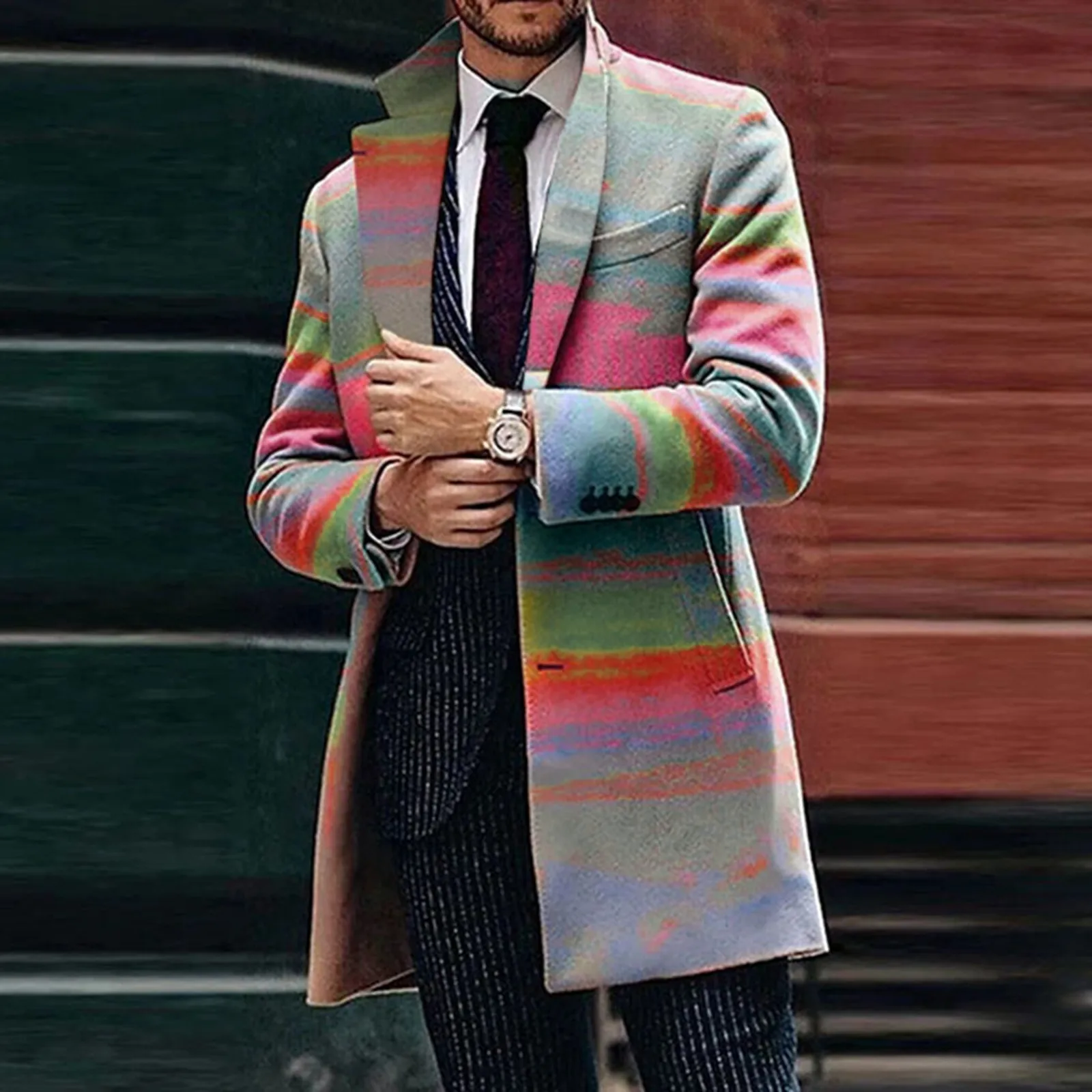
Your Long Overcoat Buying Guide: 5 Essential Considerations
Budget Planning
When investing in an overcoat, understanding price-quality relationships helps set realistic expectations. Entry-level wool-blend coats typically start around $200-300, while mid-range pure wool options generally fall between $400-700. Premium and luxury overcoats featuring high-grade materials and superior construction can range from $800 to well over $2,000. Remember that higher prices typically reflect better materials, construction methods, and longevity—often resulting in better value over time despite the initial investment.Climate Assessment
Analyze your local winter conditions honestly. For mild winters (rarely below 35°F/2°C), lighter weight wools and cashmere blends offer sufficient protection while maximizing versatility. Moderate winters (regularly 20-35°F/-6 to 2°C) typically require mid-weight wool coats, potentially with layering. Severe winters (frequently below 20°F/-6°C) demand heavyweight wools, technical features, or specialized insulation—prioritize function alongside style.Wardrobe Compatibility
Your overcoat should harmonize with your existing wardrobe. Consider your typical attire and select a coat that accommodates your most common outfits. Business professionals should ensure their coat fits comfortably over suit jackets, while those with casual wardrobes might prioritize room for sweaters and layering pieces. Color selection should complement your existing palette—navy, charcoal, and camel offer maximum versatility.Occasion Analysis
Evaluate where and how you’ll wear your coat. If primarily for business settings, prioritize refined styling and traditional proportions. For diverse use across casual and formal settings, consider versatile designs with clean lines. If outdoor activities figure prominently in your winter routine, technical features and enhanced mobility may justify compromise on formal elegance.Quality Markers
Learn to identify signs of quality construction. Look for natural horn buttons rather than plastic, hand-stitched details around collars and lapels, clean pattern matching at seams, and substantial inner linings. Quality overcoats feature generous seam allowances, well-finished buttonholes, and neat, consistent stitching throughout. These details indicate craftsmanship that extends to the invisible structural elements.
For comprehensive winter protection, explore our complete range of men’s winter coats designed to meet diverse style preferences and performance requirements.
Mens Heavy Winter Coat, Mens Insulated Coat, Mens Parka Coat
Price range: $175.52 through $237.36 Select options This product has multiple variants. The options may be chosen on the product pageMens Big and Tall Winter Coats, Mens Down Coat, Mens Hooded Winter Coat, Mens Puffer Coat
Price range: $126.44 through $217.01 Select options This product has multiple variants. The options may be chosen on the product pageMens Big and Tall Winter Coats, Mens Hooded Winter Coat
Price range: $80.32 through $106.68 Select options This product has multiple variants. The options may be chosen on the product pageMens Cashmere Overcoat, Mens Hooded Winter Coat, Mens Wool Blend Coat
Price range: $128.72 through $139.68 Select options This product has multiple variants. The options may be chosen on the product pageMens Hooded Winter Coat, Mens Insulated Coat, Mens Puffer Coat, Mens Quilted Coat
Price range: $139.88 through $177.72 Select options This product has multiple variants. The options may be chosen on the product pageMens Black Overcoat, Mens Black Wool Coat, Mens Wool Overcoat
$339.18 Select options This product has multiple variants. The options may be chosen on the product page
What About Layering? Maximizing Warmth Without Bulk
Strategic layering transforms a good overcoat into an exceptional cold-weather system without compromising your silhouette. The key lies in selecting thin, high-performing layers rather than bulky alternatives.
Base Layer Fundamentals
– Choose lightweight merino wool or technical fabrics that wick moisture
– Avoid cotton, which retains dampness and accelerates heat loss
– Select form-fitting pieces that won’t bunch or create uncomfortable pressure points
Mid-Layer Strategy
– Lightweight merino sweaters or cashmere provide substantial warmth without volume
– Consider technical fleece or wool vests for core warmth with unrestricted arm movement
– Layer thinner pieces rather than single thick items for better temperature regulation
Practical Layering Tips
– Purchase overcoats with layering in mind—typically one size larger than your suit size
– Ensure shoulder fit remains correct even with layers beneath
– Test range of motion with your typical winter layers before finalizing purchase
– Remember that collar style affects layering—notch lapels accommodate scarves differently than peak lapels
Are Long Overcoats Suitable for Extreme Winter Conditions?
Long overcoats can indeed perform admirably in severe winter conditions, but with important qualifications. Traditional wool overcoats excel in dry cold down to approximately 10-15°F (-12 to -9°C) with proper layering. Below these temperatures, specialized features become increasingly important.
Modern technical overcoats bridge this gap by incorporating advanced insulation, wind-blocking membranes, and water-resistant treatments while maintaining classic styling. These hybrid garments can often handle temperatures as low as -10°F (-23°C) while looking appropriate for professional settings.
For truly extreme conditions (sustained exposure below -10°F/-23°C), conventional overcoats should be supplemented with technical base and mid-layers. Alternatively, consider specialized warm coats designed for extreme cold that prioritize functional performance over traditional tailoring.
The greatest limitation of traditional overcoats in extreme conditions isn’t actually temperature—it’s precipitation. Heavy snow, freezing rain, or sleet can compromise wool’s insulating properties, making technical outerwear necessary in wet, frigid conditions despite its less refined appearance.
How Should a Quality Long Overcoat Fit Properly?
The perfect overcoat fit balances comfort, style, and functionality. Follow these guidelines to ensure your coat performs optimally while flattering your physique:
Shoulders: The shoulder seams should align with or extend just slightly beyond your natural shoulders. This allows room for suit jackets or sweaters underneath without creating a droopy appearance when worn over lighter clothing.
Chest: When buttoned, the coat should close smoothly without pulling or creating an “X” pattern across the chest. You should be able to slide a flat hand comfortably between your chest and the buttoned coat.
Sleeve Length: Ideally, sleeves should cover your suit jacket sleeves completely while allowing approximately ½ inch of shirt cuff to remain visible. Without a suit, sleeves should reach the base of your thumb when arms hang naturally.
Body Length: The hem should fall somewhere between mid-thigh and just below the knee, depending on style and height. Shorter men often benefit from slightly shorter coats to maintain proportion.
Collar and Lapels: When turned up, the collar should protect your neck completely without excessive gaping. Lapels should lie flat against the chest when buttoned.
Common Fit Mistakes:
– Oversized shoulders creating a sloppy, drooping appearance
– Insufficient chest room preventing comfortable layering
– Excessively long sleeves covering hands entirely
– Too much waist suppression limiting layering potential
Remember that minor alterations to sleeve length and waist suppression are relatively straightforward, while shoulder adjustments are extremely difficult and costly.
Single vs. Double-Breasted: Which Style Is Warmer?
When strictly comparing thermal properties, double-breasted overcoats offer superior warmth due to their overlapping front panels creating an additional insulation layer across the chest and torso. This design essentially doubles the fabric protection over your core, significantly reducing heat loss in windy conditions.
Double-Breasted Advantages:
– Extra fabric layer across chest provides approximately 25% more insulation
– Higher button stance protects upper chest and neck
– Typically features wider lapels that can be turned up for added neck protection
– Creates a more effective wind barrier when fully buttoned
Single-Breasted Benefits:
– More versatile for varying temperature conditions
– Easier to wear open when necessary without looking unbalanced
– Generally more accommodating for different body types
– Often lighter weight, improving comfort during active commuting
From a style perspective, double-breasted coats tend to create a more formal, bold statement, while single-breasted designs offer greater versatility across different dress codes. Consider your typical usage patterns—if maximum warmth is your primary concern and you’ll consistently button your coat, the double-breasted option delivers meaningful thermal advantages.

Frequently Asked Questions About Men’s Long Overcoats
How much should I expect to spend on a quality overcoat?
Quality overcoats span a wide price range based on materials, construction, and brand positioning. Entry-level wool-blend options typically start around $250-350, while mid-range pure wool coats generally fall between $450-800. Premium and luxury overcoats featuring high-grade materials like cashmere and superior construction techniques can range from $900 to $3,000+. Focus on material quality and construction rather than brand names for the best value.
Can I wear a long overcoat in rain or snow?
Traditional wool overcoats provide decent protection during light precipitation, as wool naturally repels moisture to a degree. However, extended exposure to heavy rain or snow will eventually saturate the fabric, compromising both warmth and appearance. For regular exposure to wet conditions, consider wool overcoats with water-resistant treatments or technical wool blends designed for weather protection. Always allow wet wool coats to dry naturally at room temperature.
How do I determine the right size when buying online?
Start with your suit jacket size and add one size if you plan to wear the coat over suits or substantial layering. Carefully review the brand’s size chart, paying particular attention to chest and shoulder measurements. For maximum accuracy, measure a well-fitting coat you already own and compare those measurements to the product specifications. Focus especially on shoulder width, chest circumference, and sleeve length as these are most critical for comfort and appearance.
How long should an overcoat last with proper care?
A quality wool overcoat with proper care should last 7-10 years with regular use, and potentially 15-20+ years with occasional wear and excellent maintenance. Factors affecting longevity include fabric quality, construction methods, wearing frequency, and maintenance practices. Regular brushing, appropriate storage, timely repairs, and limited dry cleaning all extend useful life significantly. Investment-grade overcoats with canvassed construction often improve with age as they conform to your body.
What’s the difference between an overcoat and a topcoat?
The primary distinction is weight and intended season. Overcoats are constructed from heavier fabrics (typically 18+ oz per yard) designed specifically for winter weather and cold protection. Topcoats feature lighter fabrics (usually 14-18 oz per yard) intended for transitional seasons like fall and spring. While similar in style and appearance, overcoats provide significantly better insulation in truly cold conditions, while topcoats offer greater comfort in mild or moderate temperatures.
At Metro Cloak, we understand that the perfect overcoat is both a functional necessity and a style statement. Our curated collection combines premium materials with exceptional craftsmanship to ensure you stay warm and distinguished throughout the winter season.

